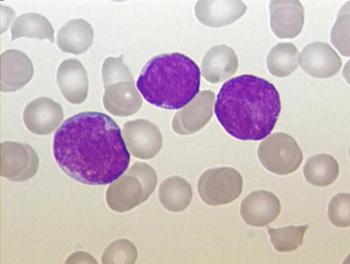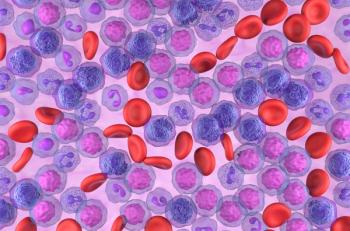
Oncology NEWS International
- Oncology NEWS International Vol 13 No 2
- Volume 13
- Issue 2
Doubling Imatinib Dose Ups CML Response Rates
SAN DIEGO- Doubling the standard dose of imatinib mesylate (Gleevec) to 800 mg provided more complete cytogenetic responses (CCRs) more quickly with higher rates of PCR (polymerase chain reaction) negativity than the standard dose (400 mg) in patients with previously untreated early-stage chronic myeloid leukemia (CML).
SAN DIEGO Doubling the standard dose of imatinib mesylate (Gleevec) to 800 mg provided more complete cytogenetic responses (CCRs) more quickly with higher rates of PCR (polymerase chain reaction) negativity than the standard dose (400 mg) in patients with previously untreated early-stage chronic myeloid leukemia (CML).
The 400-mg dose was established as a standard dose based on somewhat arbitrary criteria, said Jorge E. Cortes, MD, associate professor of medicine, M.D. Anderson Cancer Center, in that phase I dose-finding trials of 25 to 1,000 mg showed a dose response without identifying a maximum tolerated dose.
Standard 400-mg doses in this population produce CCRs in the 70% to 80% range in previously untreated patients and in the 40% to 60% range in patients who have failed interferon therapy, Dr. Cortes said at the 45th Annual Meeting of the American Society of Hematology (abstract 94). Molecular complete remissions (undetectable levels of Bcr-Abl translocation by PCR), which correlate with likelihood of disease progression, occur in only the 4% to 10% range at this dose.
Initial experience with higher imatinib doses (600 mg and 800 mg) has been promising in patients with cytogenetic resistance or relapse after 400 mg, Dr. Cortes said.
To assess front-line therapy in patients with Philadelphia positive or Bcr-Abl positive early chronic phase CML, the investigators gave oral daily doses of imatinib 800 mg (400 mg twice daily) to 114 patients, and compared the results with those of a prior study among 50 patients receiving the 400-mg daily dose.
In both studies, nearly all patients had a complete hematologic response. Overall, CCRs were reported in 78% of patients in the 400-mg study (median follow-up, 31 months) and in 90% of patients in the 800-mg study (median follow-up, 16 months, P = .01). By 3 months, 52% of patients receiving 800 mg had attained a CCR, compared with 36% in the standard-dose group (P = .0005). By 6 months, the respective CCR rates were 82% and 52%.
The investigators also evaluated the quantitative PCR percentage ratio (%QPCR = Bcr-Abl transcripts × 100/Abl) at different time points. After 6 months, 38% of patients at the higher imatinib dose had reached values lower than 0.05%, which represents about a 3 log reduction from baseline. By 12 months, 60% were below this level.
"We have shown previously that patients achieving CCRs with QPCR less than 0.05% have a significantly longer duration of response," Dr. Cortes commented.
Undetected Bcr-Abl Levels
He also noted that the cumulative incidence of patients attaining undetectable levels of Bcr-Abl by nested PCR was significantly higher for the high-dose imatinib group at 18 months and 24 months (28% and 48% vs 7% and 17%, respectively, for the standard-dose group, P = .001). No patients in the 800-mg group and four in the standard-dose group had disease transformation to blast phase (mostly in those not achieving CCR).
Toxicities were similar in the two groups, Dr. Cortes said, with liver dysfunction seen in 10% at 400 mg and 7% at 800 mg, and rash at 6% in both groups. More patients treated with 800 mg had decreases in neutrophils and platelets, but these frequently improved in 2 to 3 months, with a minority of patients requiring dose reductions. Growth factors will be given routinely in future trials, he noted.
Dr. Cortes concluded that high-dose imatinib offers faster complete CCRs and more PCR negativity at the cost of more common myelosuppression. "I feel very comfortable from these data that we have treated enough patients to say that the higher dose is better. I offer it to every patient," he said.
Articles in this issue
almost 22 years ago
Adjuvant Docetaxel Bests FAC in Breast Caalmost 22 years ago
Adding Rituximab to CHOP Chemo Improves DLBC Lymphoma Outcomesalmost 22 years ago
BP1 Expression May Be Indicator of Early Breast Canceralmost 22 years ago
Bexxar: Low Risk of Secondary MDS/AMLNewsletter
Stay up to date on recent advances in the multidisciplinary approach to cancer.

















































































